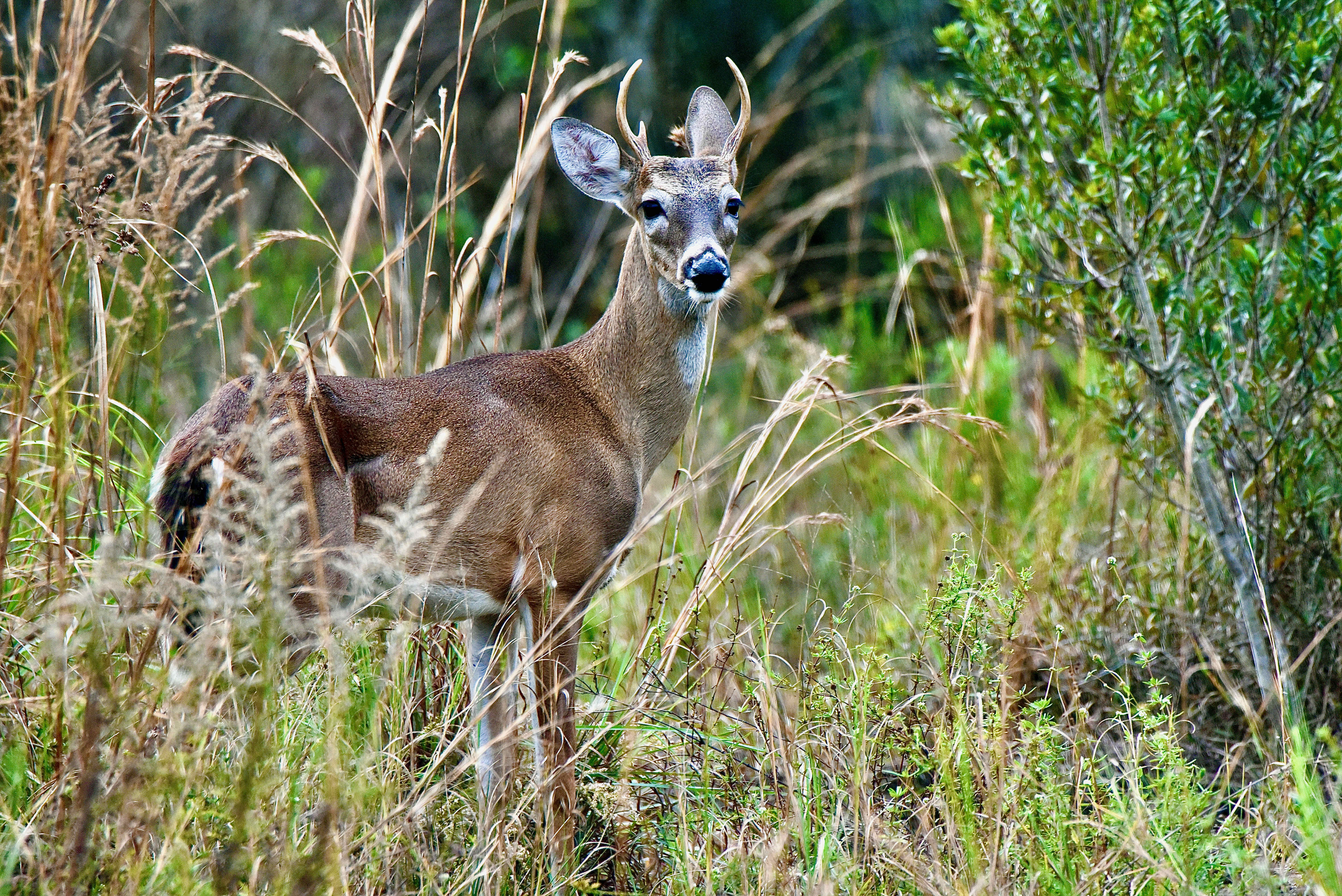
White-tailed deer, photographed at Loxahatchee Slough Natural Area.
These are some of our favorite photographs of 2022, and a few from 2021, most of which have not been published on this site previously. Emphasis on the word favorite, not necessarily out best. In some ways each tells a story or evokes memory or an emotion.
The photo above of the white-tailed deer came during one of our hikes through Loxahatchee Slough Natural Area in Palm Beach Gardens, Palm Beach County. We had slogged up and down some of the beaten and not so beat paths through the 14,000-acrea preserve, finding a few cool wild flowers (including a rein orchid) but hoping for something more and not finding it. We turned down the Echoche Trail maybe 100 yards, when we spotted this guy browsing and otherwise minding his own business. He paused to look at me, almost posing for me.
First thing that goes through my mind is not doing anything that might scare him off. Fortunately, he was close enough to me that I didn't have to move to get a better picture. I hurriedly snapped off a few shots, not wanting to miss the opportunity. Second thing is worrying about focus and lighting and maybe whether an odd thing like a tree or branch in the way ruining an otherwise good pic. So far so good. I had been shooting all day and the light hadn't changed, so my settings were good. My new friend hung around long enough for me to get another round of photos before meandering into the woods.
Echoche, by the way, is a Seminole word meaning "many deer." I saw only one deer, not many, but one was enough on this day!
More favorites ...
The photo above of the white-tailed deer came during one of our hikes through Loxahatchee Slough Natural Area in Palm Beach Gardens, Palm Beach County. We had slogged up and down some of the beaten and not so beat paths through the 14,000-acrea preserve, finding a few cool wild flowers (including a rein orchid) but hoping for something more and not finding it. We turned down the Echoche Trail maybe 100 yards, when we spotted this guy browsing and otherwise minding his own business. He paused to look at me, almost posing for me.
First thing that goes through my mind is not doing anything that might scare him off. Fortunately, he was close enough to me that I didn't have to move to get a better picture. I hurriedly snapped off a few shots, not wanting to miss the opportunity. Second thing is worrying about focus and lighting and maybe whether an odd thing like a tree or branch in the way ruining an otherwise good pic. So far so good. I had been shooting all day and the light hadn't changed, so my settings were good. My new friend hung around long enough for me to get another round of photos before meandering into the woods.
Echoche, by the way, is a Seminole word meaning "many deer." I saw only one deer, not many, but one was enough on this day!
More favorites ...
It's a Bird! It's a plane! ... Hey! It is a Bird!
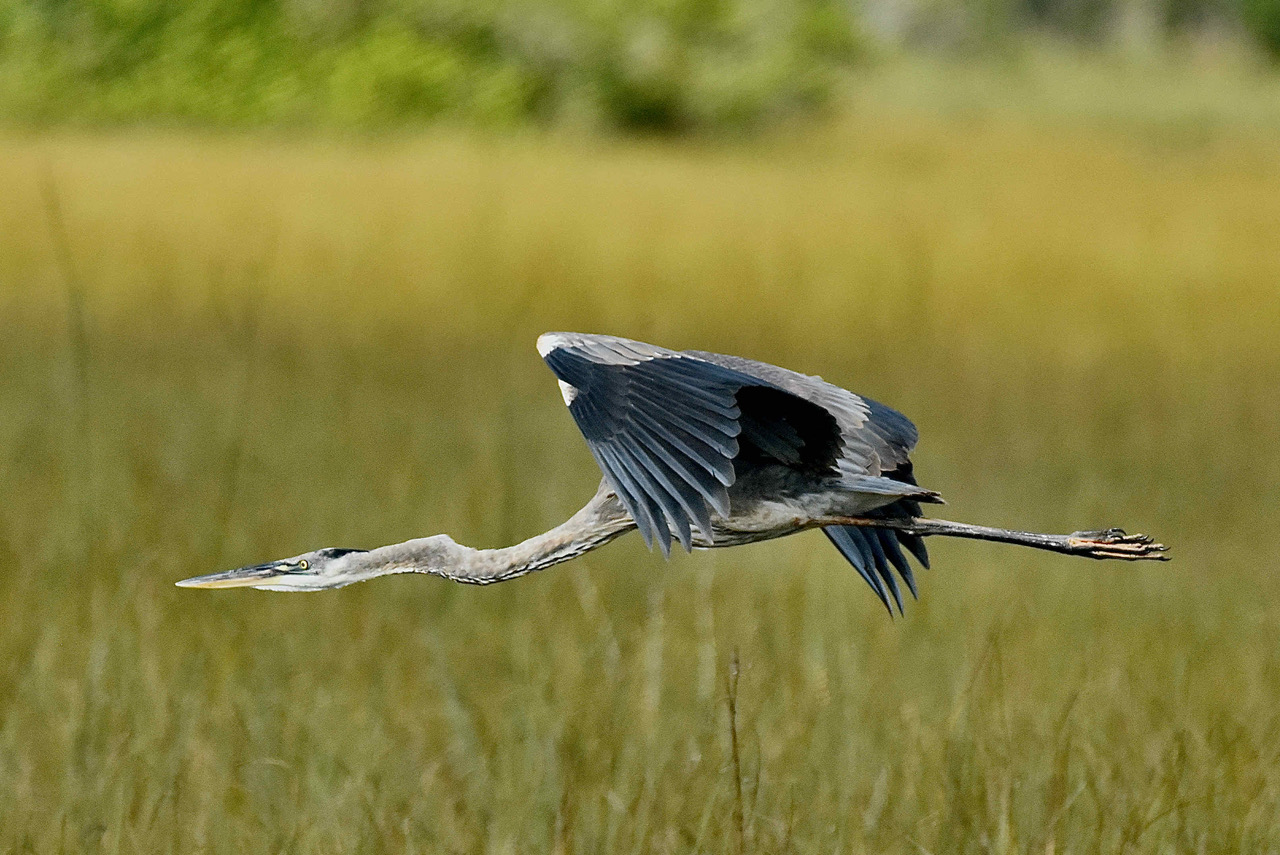
These photos, above and below, are of the same great blue heron we came across while visiting Shark Valley, Everglades National Park in late 2021. It was our first visit to Shark Valley in nearly seven years, and it was almost surreal to be back to one of our "happy places" after such a long time. It was late in the afternoon in early November and the light was absolutely perfect. But we digress. Both photos capture the aerodynamics of the heron in flight. The one above shows the bird more in his habitat, the one below, the bird soaring through the sky. Of the two, our preference is for the one above by a slight margin. Your favorite?
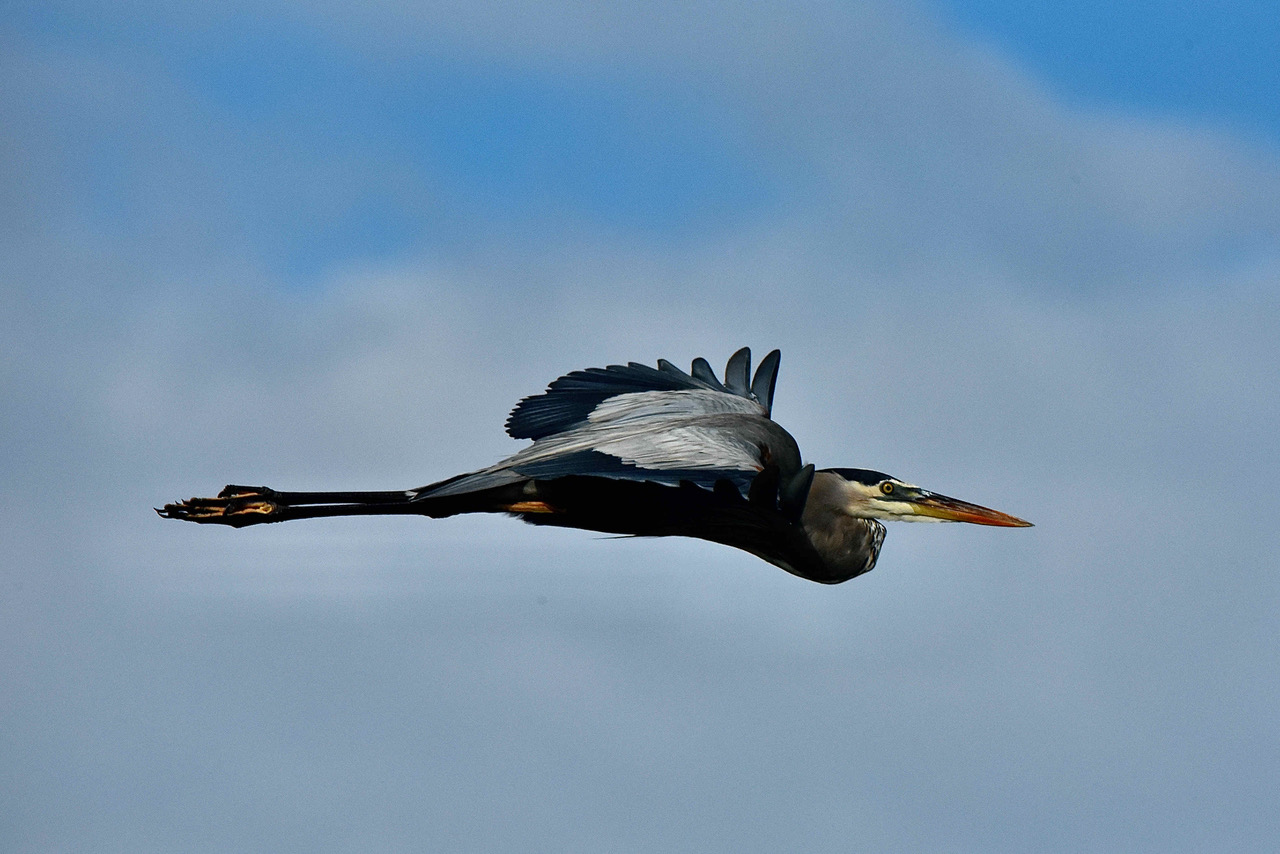
A tale of two hawks and two pics
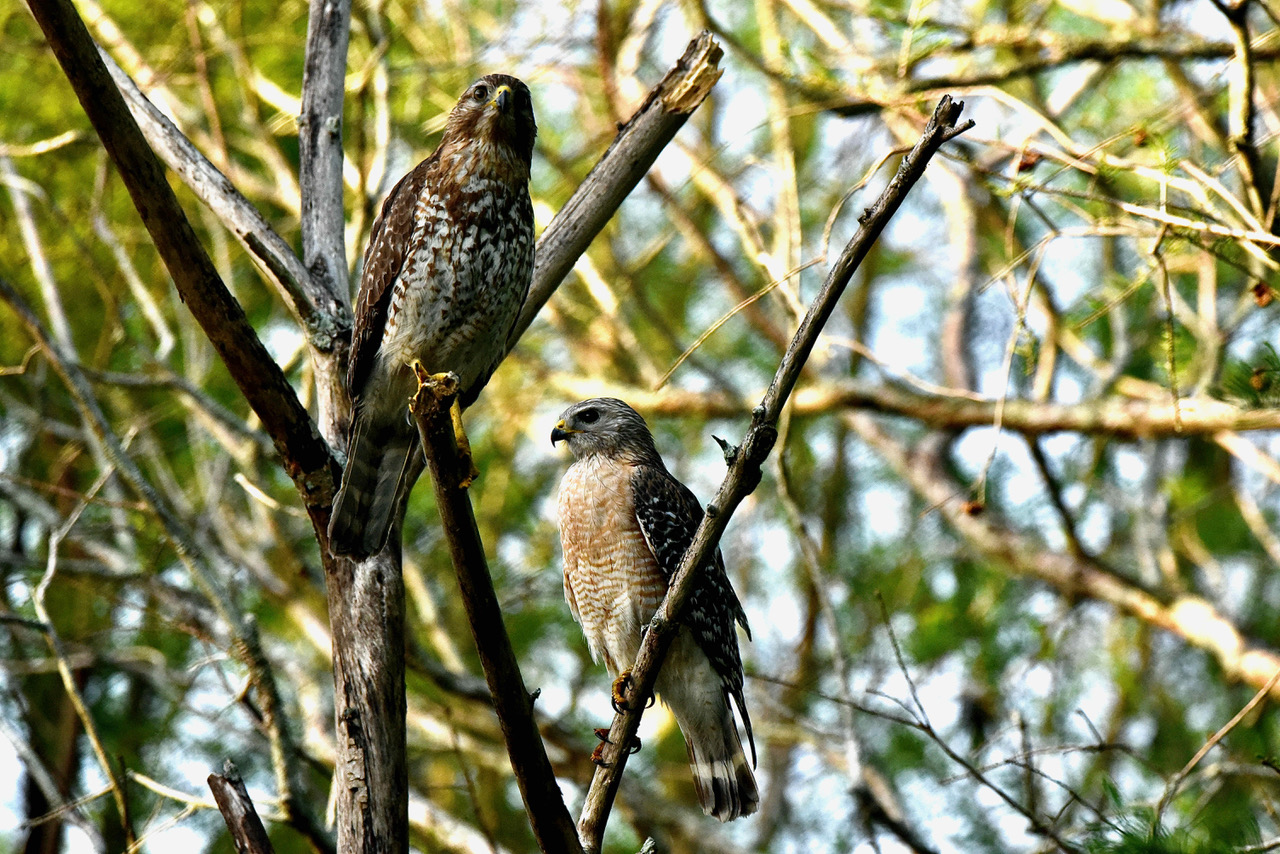
This pair of red-shouldered hawks made it a habit of perching on this dead cypress tree along the banks of what's known as the Gator Hole atGreen Cay Nature Center during the spring of 2022. Invariably, they'd show up in the evening, sometimes one, sometimes both. The reason for their interest in this part of Green Cay became apparent in a few weeks: they had chosen to nest in the cypress trees on the opposite bank of the Gator Hole. Unfortunately, boughs of the cypress tree obscured the nest; you could see that the hawks were there but not much else. No idea whether the pair successfully raised any offspring.
This is not our favorite picture of this couple — see the photo below taken a year earlier — but it does illustrate the differences between male and female red-shouldered hawks. The female, perched above, is slightly larger than the male, sitting below, but the male is noticably more colorful than his mate.
This is not our favorite picture of this couple — see the photo below taken a year earlier — but it does illustrate the differences between male and female red-shouldered hawks. The female, perched above, is slightly larger than the male, sitting below, but the male is noticably more colorful than his mate.
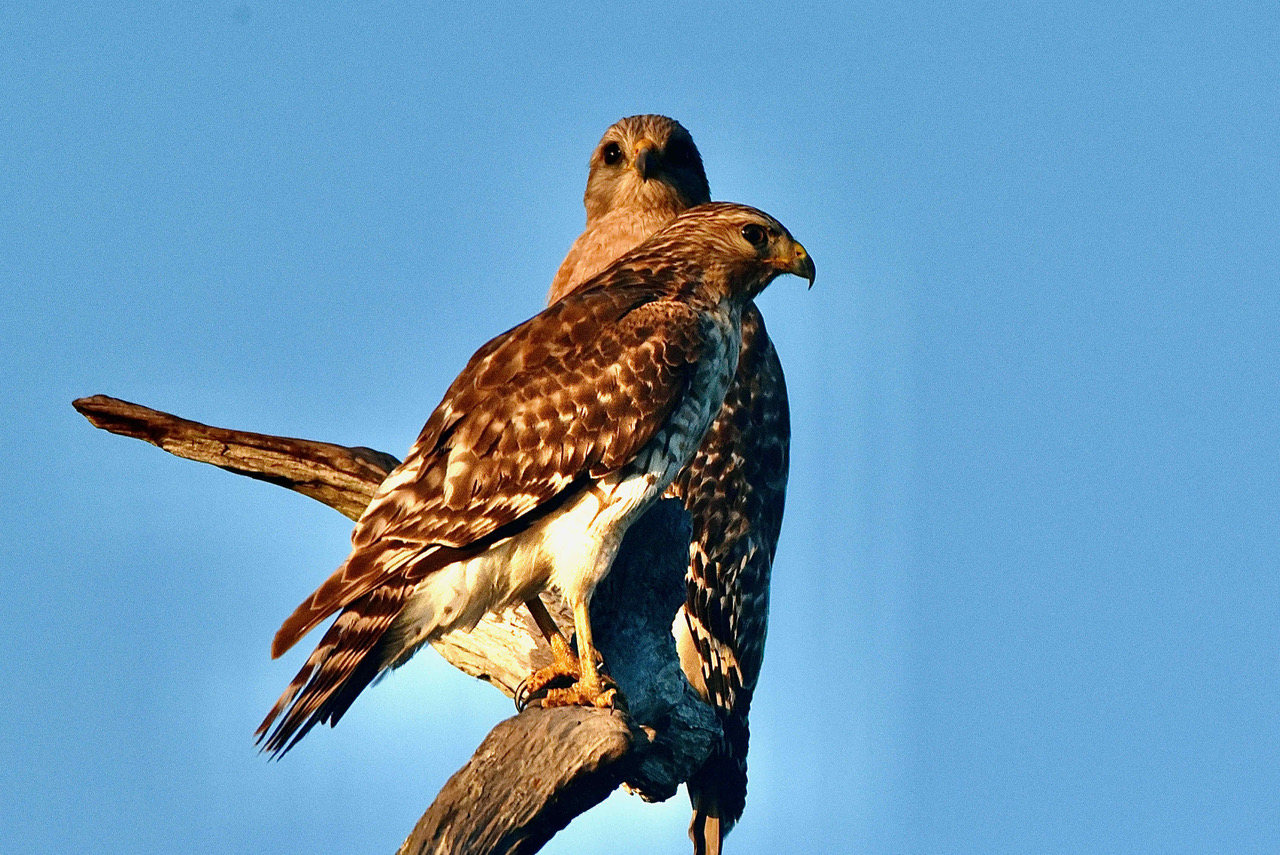
This photo, taken last year also at Green Cay shows Mr. and Mrs. Hawk in a different light, both literally and figuratively. The bright blue sky provides a better background, and perched together like they are leaves no doubt that they are a couple. On the other hand, it doesn't reveal as much the physical differences between male and female. If I had to pick which one to hang on my wall, it would be this one, while the one above might work on a text about red-shouldered hawks. Which do you like?
Many Mouths to Feed
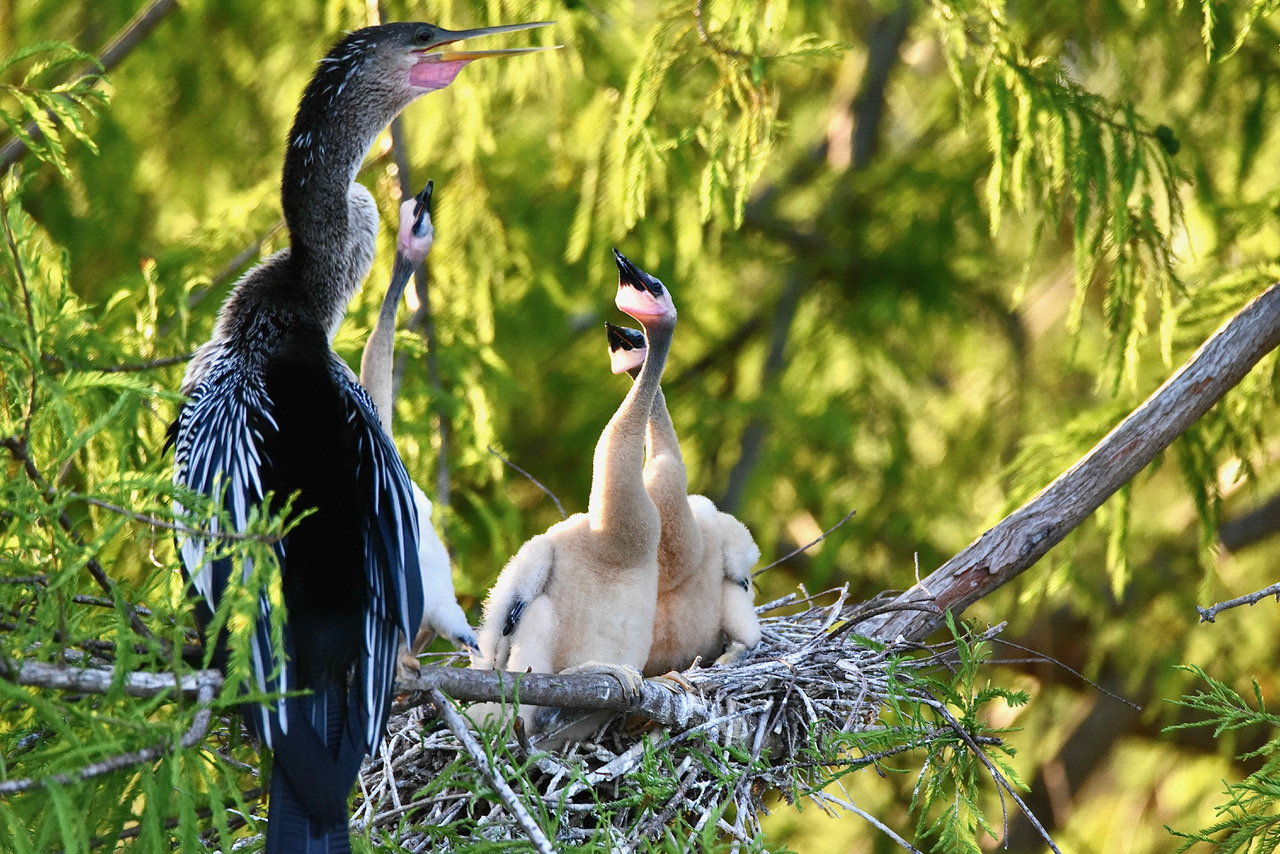
Parenting ain't an easy task for any species, avian or otherwise, that takes care of its offspring, as this photo shows. This anhinga dad (we think) has three mouths to feed, each with a seemingly insatiable appetite. The good news is that they grow up fast, meaning these chicks will be on their own in a matter of months. The bad news is that they grow up fast, meaning their appetites increase just as fast, until they're ready to go off on their own. In the meantime, the parents need to feed themselves and protect their little ones from predators who might see them as an easy meal. A lot of work.
We don't have data for anhingas but we do for a couple of other birds that provide some idea of the work involved in raising their offspring: a pair of wood storks and their offspring will, on average, consume as much as 443 pounds of fish during breeding season. A bald eagle chick will eat half its weight in a day; its parents might make as many as 40 trips a day to find enough food to satisfy his appetite.
We don't have data for anhingas but we do for a couple of other birds that provide some idea of the work involved in raising their offspring: a pair of wood storks and their offspring will, on average, consume as much as 443 pounds of fish during breeding season. A bald eagle chick will eat half its weight in a day; its parents might make as many as 40 trips a day to find enough food to satisfy his appetite.
Itsy Bitsy Spider? Not this Girl
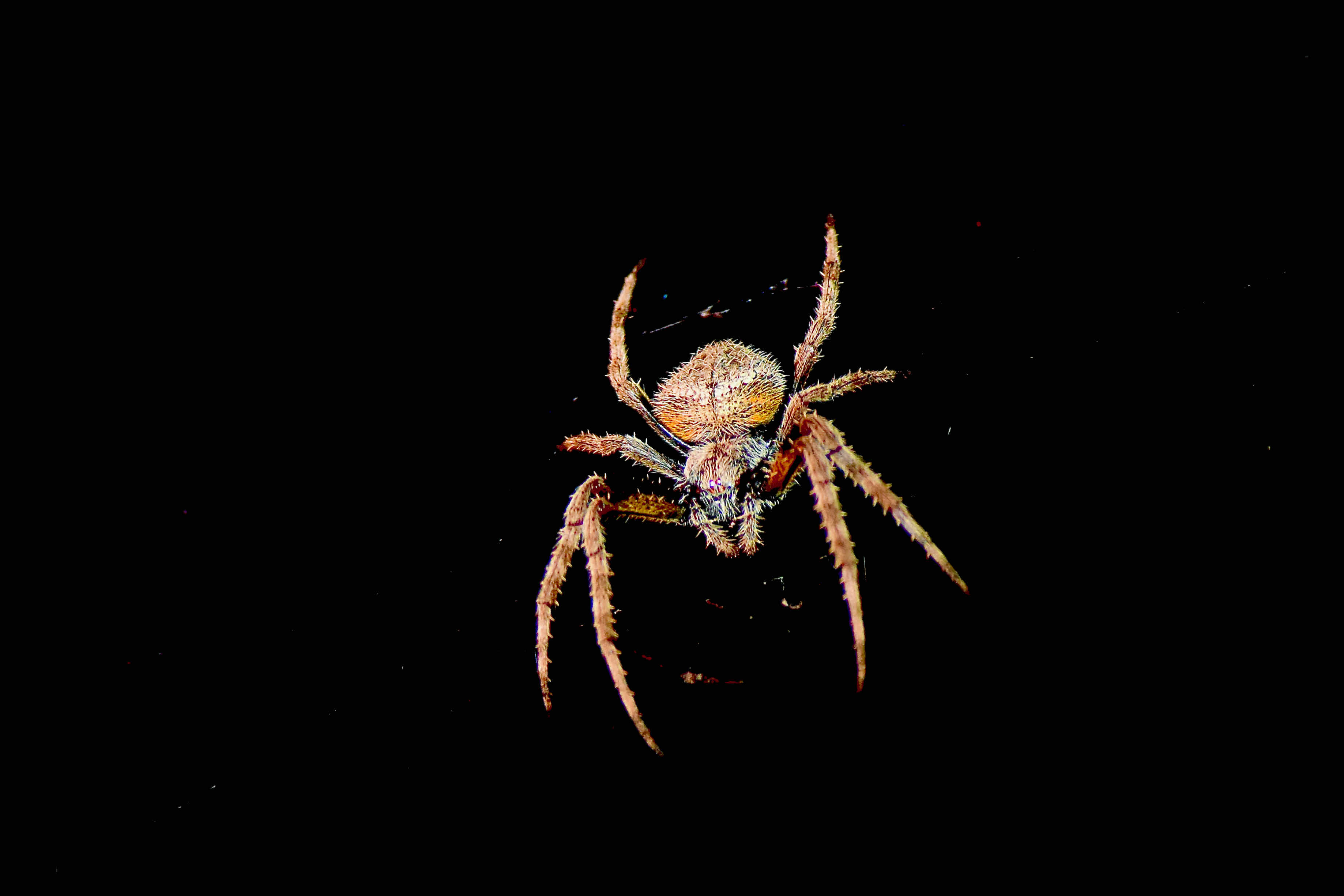
This is a tropical orb weaver, and the thing about tropical orb spiders is that they only come out at night. At first light, they'll take down their web and find some place to hide until the last flash of daylight. We spotted one in our yard one night a year or so ago, and said to ourselves, "Cool! we need to come back during the day and get a photograph." We did not know of its nocturnal habits, and of course, it was long gone when we returned.
Last August we saw one again under our security light, and we vowed not to make the same mistake again. We got our camera and snapped away. The thing we found is that shooting it at night, with the aid of a flash, revealed much more detail and made for a more interesting photo than if we had shot it during the day.
Just to be clear, orb weaver females are the ones who do the web weaving; males are much smaller and tend to hang around the periphery.
Last August we saw one again under our security light, and we vowed not to make the same mistake again. We got our camera and snapped away. The thing we found is that shooting it at night, with the aid of a flash, revealed much more detail and made for a more interesting photo than if we had shot it during the day.
Just to be clear, orb weaver females are the ones who do the web weaving; males are much smaller and tend to hang around the periphery.
Nearly Roadkill in the Fakahatchee
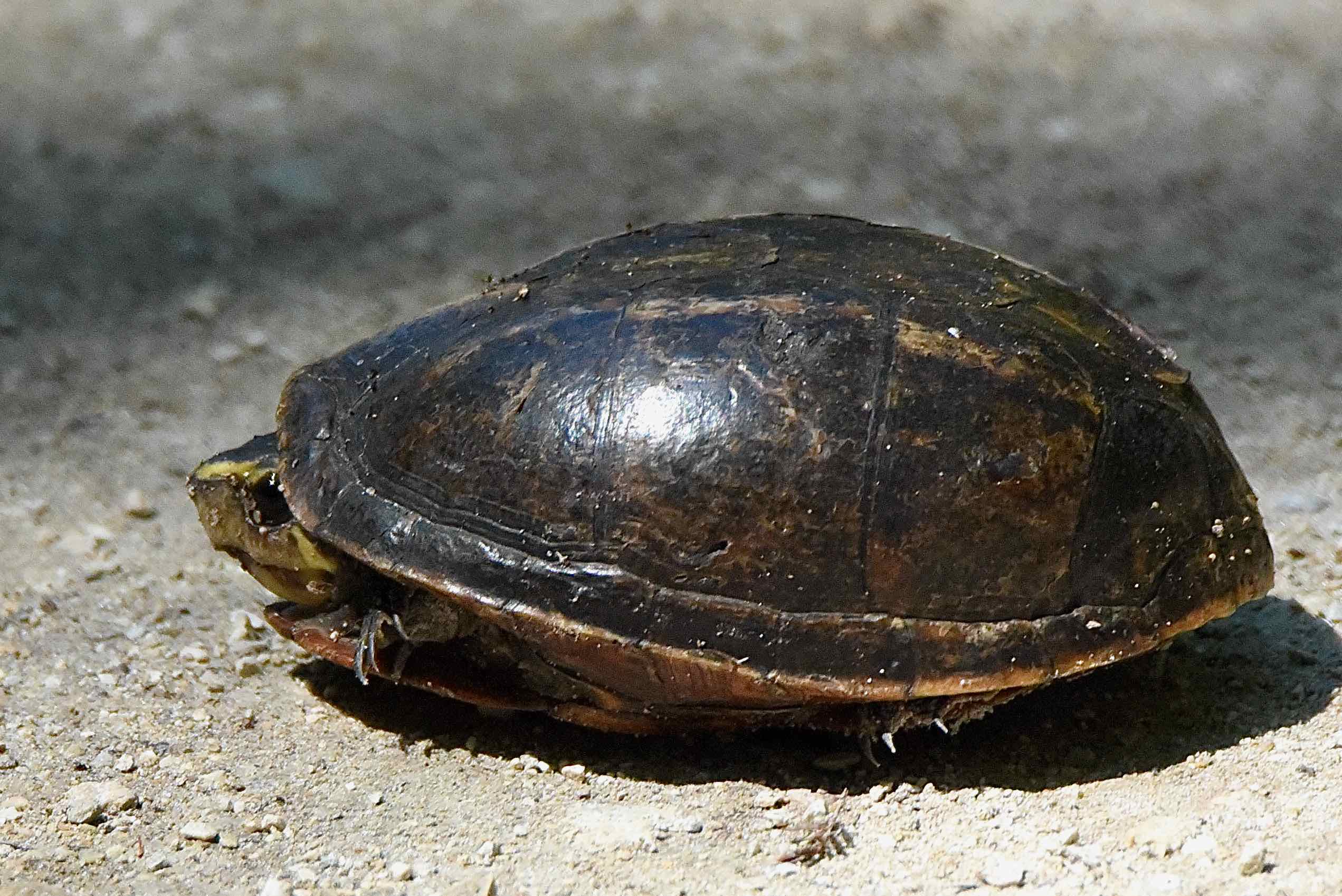
We were cruising down Janes Scenic Drive in Fakahatchee Strand Preserve State Park last May when we spotted something odd in the middle of the road. Fortunately, because of the condition of the road, cruising down Janes Scenic Drive means driving slowly, and we were able to stop before running it over. Turns out the odd object was this striped mud turtle. Cute little guy! We picked him up and moved him off to the side in the direction he was heading, hoping to keep him out of harm's way. Snapped a few shots of him before heading on our way.
Kermit's Buddy
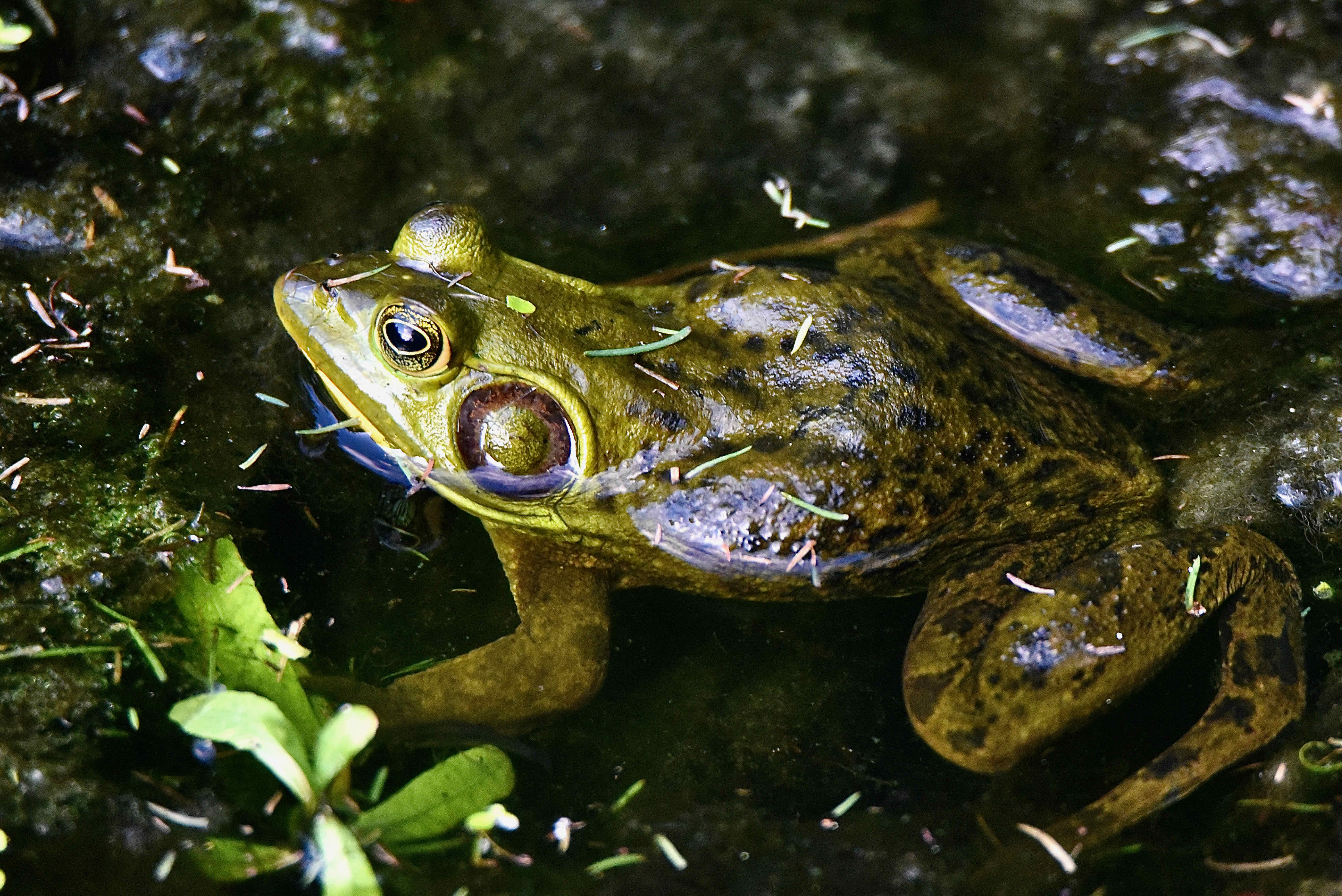
Pig frogs are kind of strange in a way. At times, you'll hear hundreds and see none. At other times, for seemingly no rhyme or reason, they'll be easy to spot. We found this guy in the Gator Hole at Green Cay. We like the mix of dark greens and blacks in the photo, plus details of the frog's anatomy.
My Hero in the nick of time!
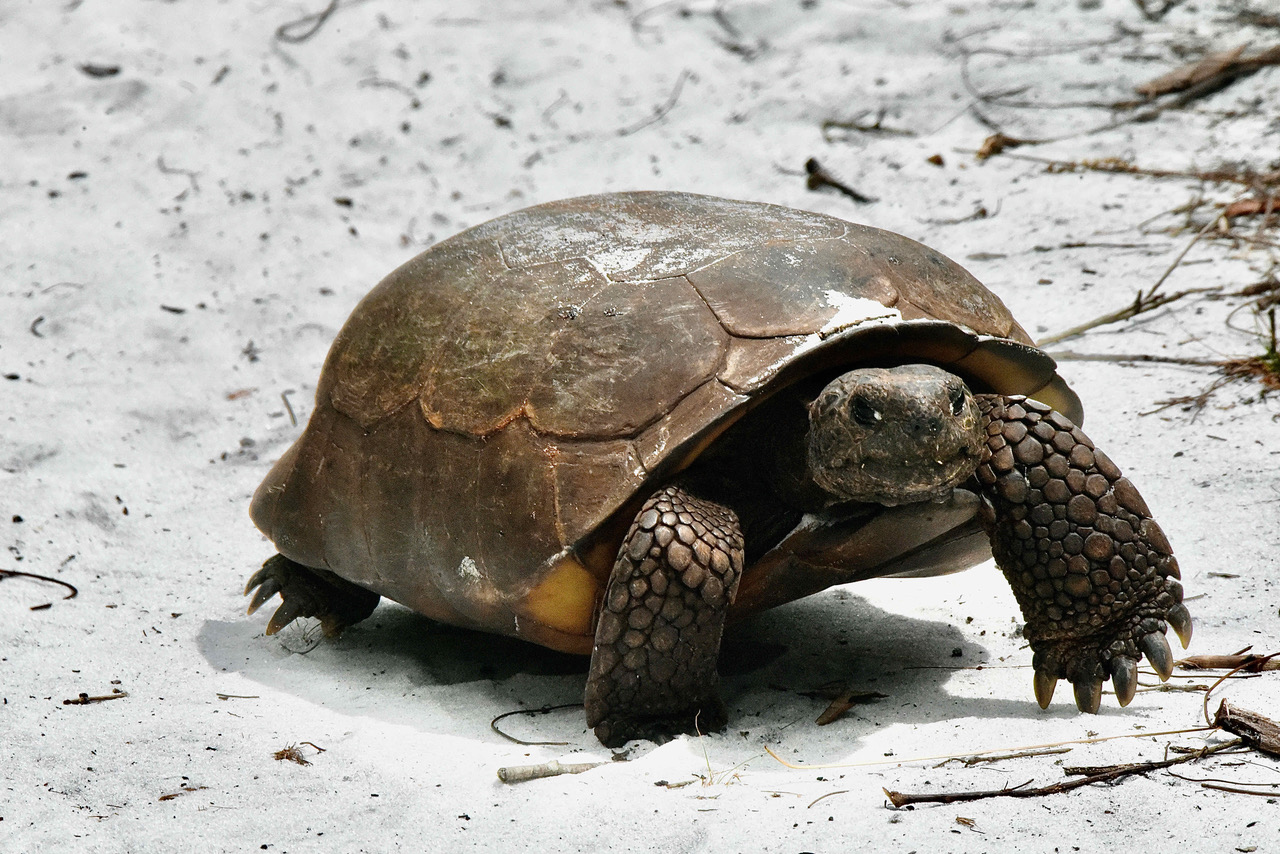
This is no great shakes of a photo, but it's exactly what I needed at the time. I was redoing my page for the Blazing Star Environmental Preserve in Boca Raton and had made several trips there to photograph plants and animals. As I put the page together, I decided I really needed a photograph of a gopher tortoise to complete the page, so on a gray spring day, I drove to the preserve and hiked the grounds,including areas where they're known to hang out. No luck. I had all but given up on getting my photograph as I walked down a spur off the main trail; when I turned around to head back to the parking lot, guess who comes walking down the trail!. My hero in the nick of time indeed!
Published by Wild South Florida, PO Box 7241, Delray Beach, FL 33482.
Photographs by David Sedore. Photographs are property of the publishers and may not be used without permission.
